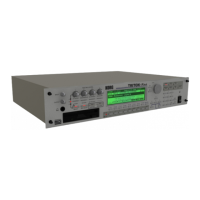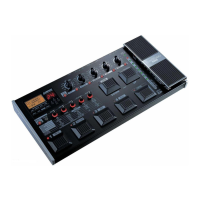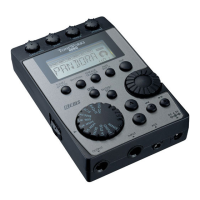6–1: Pattern Edit
118
1 In the tab 1 display, specify the bounce destination pattern.
2 When you select this command, the dialog box at right will
appear.
3 Specify the bounce source song and pattern.
4 To execute the Bounce Pattern operation press the OK but-
ton. To cancel without executing press the Cancel button.
6–1H: Get From Track
This command copies musical data from a track into the pattern specified in the tab 1 display.
1 Specify a pattern in the tab 1 display.
2 In “6–1D: Pattern Parameter” specify the length of the des-
tination pattern.
3 When this command is selected, the dialog box shown at
right will appear.
4 Select the song from which the data will be copied.
5 Select the track from which the data will be copied.
6 Select the first measure from which the data will be copied.
7 To execute the Get From Track command, press the OK button. To cancel the command, press
the Cancel button.
6–1I: Put To Track
This command places a pattern number in a track. Unlike the Copy To Track command, the musi-
cal data of the pattern will not actually exist in the track into which the pattern has been put.
When the song is played back and playback arrives at the pattern number, the specified pattern is
called up and its data is played.
By creating frequently-repeated phrases or drum patterns as patterns and putting the patterns in
the appropriate locations of the track, you can greatly conserve sequencer memory.
Be aware that if you edit the pattern, the playback of the song in which the pattern has been
placed will also be affected.
When the Put To Track command is executed, the data will be affected in the following ways:
• The musical data in the Put destination will be erased when Put is executed.
• The pattern that was Put will be played with the time signature specified for the measures of
the Put destination.
• Control data (pitch bend data etc., but not volume data) already existing in the track will be
reset immediately before the measure at which the pattern is Put. This means that if you want
to apply pitch bend or damper in the measures where the pattern has been Put, you must write
this data directly into the pattern.
To remove a pattern that has been placed in a track, select the measure into which the pattern has
been put, and execute the “5–1G: Erase Measure” command with a “kind” setting of All.
For details on the procedure, refer to “5–1G: Erase Measure.”
1 In the tab 1 display, select the pattern.
2 When this command is selected, a dialog box shown at
right will appear.
3 Select the Put destination track.
4 Specify the starting measure of the Put location.
5 To execute the Put To Track command, press the OK but-
ton. To cancel the command, press the Cancel button.
1
2
Track 10
(Drums)
3
4
5
6
Pattern 20
Example: Pattern 20 has been Put at measures 2, 4, and 6 of track 10. When those measures are reached, pattern
20 is called and its data is played.
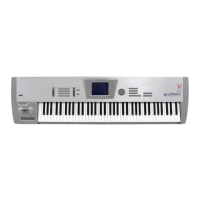
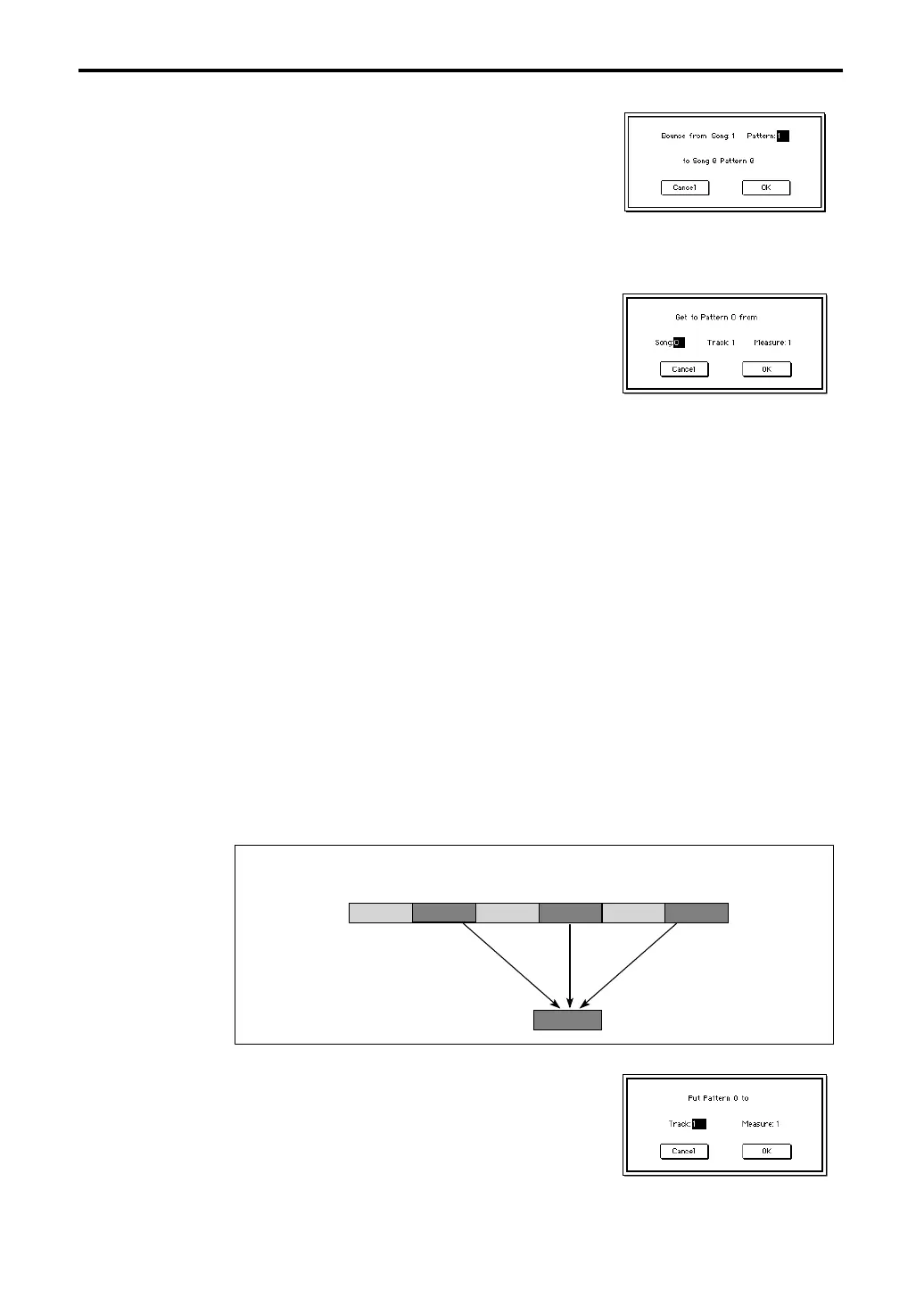